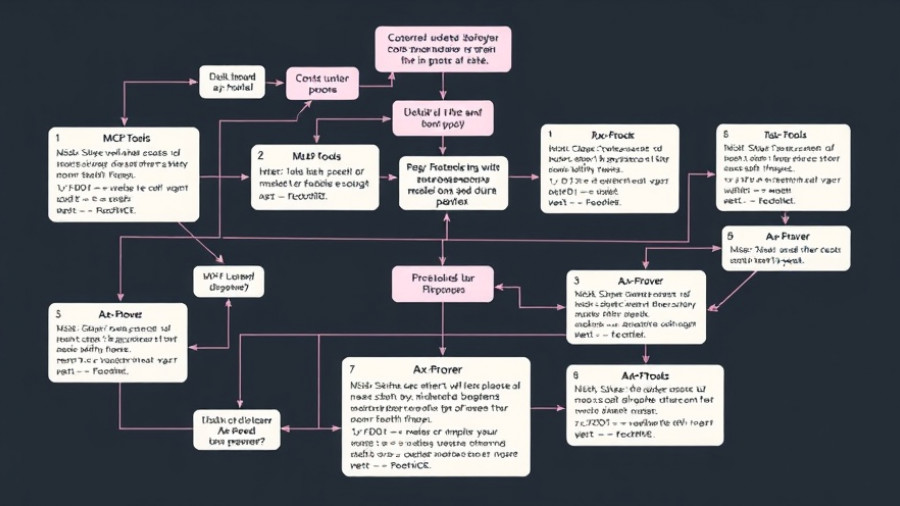
Alibaba's Ovis 2.5: A Game-Changer for AI
The release of Alibaba's Ovis 2.5 multimodal language model is a watershed moment in the world of artificial intelligence (AI), particularly in enhancing deep reasoning AI. With its 9B and 2B parameter variants, Ovis 2.5 not only raises the bar for performance but also successfully addresses some long-standing challenges faced by models in visual perception and reasoning capabilities.
Understanding Native-Resolution Vision and Its Importance
At the heart of the Ovis 2.5 model is the new native-resolution vision transformer (NaViT). Unlike traditional models that had to resize images — often distorting vital details — NaViT processes visuals at their original resolutions. This marks a significant technological advancement, as it allows the model to maintain the integrity of intricate details in a variety of applications, from scientific diagrams to complex infographics.
This enhancement is not just a technical upgrade; it opens doors to applications requiring detailed image analysis, including academic research and technical documentation. With NaViT, Ovis 2.5's performance in visual comprehension sets a new precedent in how machines can understand and reason through visual information.
Revolutionizing Reasoning with Innovative Techniques
Ovis 2.5's reasoning capabilities are equally impressive. Traditional reasoning methods often fall short in complex tasks that require more than surface-level understanding. In response, the Ovis team has adopted a curriculum framework that provides “thinking-style” samples to enable the model to not only process information but also engage in self-correction and self-reflection. This “thinking mode” can be activated during inference, allowing users to optimize for responses that are both faster and richer in detail.
This dual approach could be revolutionary for tasks such as scientific question answering and mathematical problem solving, providing users with a more nuanced AI partner capable of engaging in deeper, multi-modal analysis.
Performance Highlights and Standard Settings
The performance metrics of Ovis 2.5 further emphasize its capabilities. Scoring an average of 78.3 on the OpenCompass multimodal leaderboard, the 9B model surpasses all open-source MLLMs under 40B parameters, while the 2B model achieves a commendable 73.9. These scores are indicative not just of a technical victory but also speak to how effectively the model handles specialized domains such as STEM reasoning and visual grounding.
These achievements exemplify how far AI has come, offering practical applications for sectors like education, healthcare, and research. As noted on platforms like Reddit and X, users have praised Ovis 2.5 for its improved performance in OCR and document processing, highlighting its ability to extract text from cluttered images and comprehend complex visual queries.
How Efficient Training is Redefining Expectations
The end-to-end training efficiency of Ovis 2.5 also deserves mention. By optimizing its training methods, the model can be scaled for broader deployment without compromising usability. This focus on efficiency means Ovis 2.5 can be seamlessly integrated into various applications, from high-end servers to personal devices, making cutting-edge AI accessible in diverse environments.
The Future of Deep Reasoning AI
As the AI landscape continues to evolve, applications of Ovis 2.5 could signal new opportunities for advancements in deep reasoning AI. Imagine a future where AI systems are able to autonomously analyze data, visualize complex relationships, and even offer predictive insights based on multimodal reasoning. Such capabilities would not only make AI more versatile but also deepen its role in innovation across sectors.
In Conclusion: Embracing the Era of Advanced AI
Alibaba's Ovis 2.5 is a testament to the possibilities that advanced AI systems can offer, especially in enhancing deep reasoning capabilities. As developers and researchers continue to explore these technologies, the implications on society can be profound. Will Ovis 2.5 lead us into a new frontier of AI development, or will we see emerging competitors challenge its standing? One thing is clear: the landscape of AI is rapidly changing, and staying informed will determine how effectively we harness these innovations for the future.
For those keen on exploring the implications of AI in your daily life and work, stay engaged with these advancements, as deep reasoning AI continues to reshape our understanding of technology and its power.
 Add Row
Add Row  Add
Add 




Write A Comment